

Scenario:
Malta. It’s 12:00, December 28 1977. Karen aged 15 and her little brother are home alone. A letter is delivered to their doorstep (we later find out he was a fingerless carpenter?). The small parcel was delivered whilst doctors in Malta were on strike (they had issues with the Labour Government at the time). The girl opens the parcel thinking it must be a Christmas gift. It works. The letter bomb explodes. She dies. At her funeral they say that this was “the first terrorist act in the country”.
Another letter bomb is delivered to Dr Chetcuti Caruana on the same day at the same time. He gets suspicious and asks his family to leave the house. He is right but the bomb is faulty. It doesn’t work. He lives. Later people blame him for Karen’s death.
Both bombs were semtex bombs that were activated as the lid is removed. Semtex is a plastic explosive, said to be used by IRA at the time.
The case remains unsolved. The suspects are a small number of Maltese doctors who reside in England and had close ties to the Nationalist party at the time and were closely connected to IRA who were mainly influenced by left-wing thinkers.
Some wonder if it is really sheer coincidence that this happened while the conservative Nationalist party where in opposition and stopped when they got into government in 1987 (some say they openly admired fascist Mussolini’s Italy pre and post WWII).
more…
In 1977, Chetcuti Caruana was a passionate spokesman in Malta Labour Party. He was then investigated in one of the most mysterious tragedies to have taken place in Malta – the killing of Karin Grech.
He was working at St Luke’s Hospital with Karin’s father Edwin Grech. Both were responsible for recruiting doctors during the doctors’ general strike. There were six doctors at the time. Karin’s father a gynecologist, had been working abroad but was asked to return to work in Malta. Dr Paul had close ties with Dom Mintoff (il-Perit, meaning the architect). He was the leader of the Labour Party at the time. Later Dr. Grech had been told not to return to Malta because they had no use for him here. Threats followed; don’t forget you have children.
11:45am December 28, 1977. It was a sunny day. The parcel had a palm print on it, the same palm print found on Karen Grech’s letter. Whoever was carrying it must have held on to it very tightly for fear the lid would come off. (Semtex bombs are commonly made to go off as soon as the lid is lifted.) Scotland Yard and the Italian Guardie came to investigate further. It turns out that the terminals were rusty preventing contact with the plastic and the bomb from setting off.
Dr Paul somehow realized it was a bomb. His family thought he was crazy, especially his father, who knew he had a fetish for secret service and military paraphernalia. He says he is not surprised for being one of the prime suspects. He was receiving anonymous phone calls just three days prior to the bombing attempt. Once, his wife answered one of these calls and heard requiem chants in the background. She pleaded her husband to quit Parliament.
During Karen’s funeral, the Archbishop broke into tears. This was the first terrorist act to have taken place in Malta. After Karin’s autopsy report, Pearl Grech (Karen’s mum) was visiting doctors’ wives, shaking the report in her hand, asking them if they had done this to her. Some said to ask ‘the mad man from Mosta Dr Cetchuti Caruana…..his bomb did not explode!’ Cetchuti Caruana was in deep distress. He cried. He was being questioned on how and were he sticks stamps to envelopes. It turns out that the address on Karen’s parcel was incorrect and the stamp was on the left hand side of the letter.
In 1991 he asked Nationalist Prime Minister if he had framed him back then. In 1995 Scotland Yard detectives said that this was clearly a political crime and those involved were leading politicians. He believes these bombs were a threat to Mintoff. His radical social reforms and his stand on Malta’s neutrality landed the government in hot waters at the time. Maltese doctors residing in London had close ties to IRA and were also suspected but never proven guilty. Forensic experts in 2011 revealed that after 34 years the investigators are still seeking fingerprints and other clues from 119 suspects. The plot is said to have hatched in the offices of the Medical Students Association where a telephone directory, envelopes and typewrites were all used there. A well known criminal with experience in explosives was commissioned to prepare these bombs, naturally at a price and perhaps blackmail as well. A very good carpenter – referred to in a Scotland Yard report, was engaged to prepare the small wooden container with two narrow compartments in it, which held the battery and explosive. The same person also used to allow the medical students and the other people to enter the legal office. Another person carried and posted the parcel bombs, one in Sliema and the other in Mosta. This person is likely to have been the same carpenter. He must have had several missing fingers, an occupational hazard commonly found amongst carpenters. It’s probably why palm prints where more evident then finger prints on the envelopes.
The case remains unsolved. The trauma remains.
Metamodernism:
„Return of History was brilliant.“
(with Francis Fukuyama)
I tried to buy a hand (blutige Hand) today. At Maskworld. All sold out because of Halloween.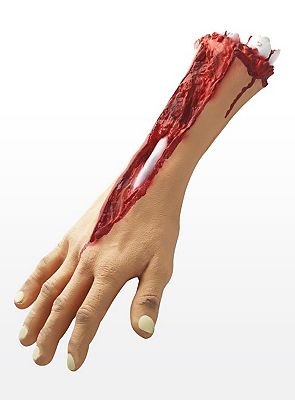
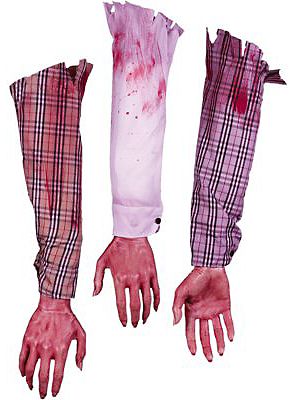

Another Right Wing Bombing
April 30, 1981, the Riocentro bombing ends up killing sergeant Pereira do Rosário and hurting captain Machado both from Brazil’s armed forces’ intelligence unit. The bomb went off early in the parking of the Riocentro convention center. It was destined to go off with other bombs during a concert with Caetano Veloso and Gilberto Gil when 20,000 people celebrated May Day. The incident, never fully investigated, occurred at a turning point in Brazil, after the huge metal workers’ strikes at the end of the 1970s, (later-president) Lula founding the PT and soon after going to prison. During General-President Figueiredo’s (‘the last dictator’) mandate, from 1979 to 1985, Brazil goes into a deep recession and he will be remembered as the worst leader the country ever had. Leaving power he says: “I want people to forget me.”
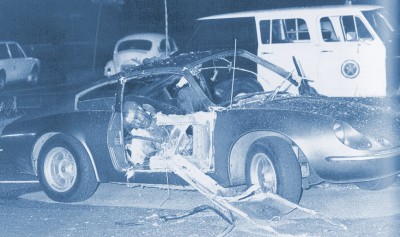
The Bologna Massacre
In Bologna, a terrorist attack at the central train station kills 85 and wounds 200. The event will become known as the Bologna Massacre. At 10:25 AM, with the train station filled with tourists, a time bomb— constructed from TNT, T4 and compound B—detonates in a suitcase placed inside a waiting room. The explosion destroys most of the main building and reaches the Ancona–Chiasso train waiting on the first platform. The roof of the waiting room collapses onto the passengers, increasing the total number of casualties. The city is unprepared for such a catastrophe. Ambulances are overwhelmed by the number of victims, and buses and taxis are enlisted to transport the injured to hospitals.
Blame for the attacks is placed on the neo-fascist terrorist organization Nuclei Armati Rivoluzionari. General Pietro Musumeci, second in command of the military intelligence agency SISMI and—as will be revealed in 1981—a member of the P2 Masonic lodge, will forge evidence in order to charge two leaders of Terza Posizione in exile with the crime. The exiles accuse Musumeci of trying to divert attention from Propaganda Due and Licio Gelli, head of P2. In 1988, four neo-fascists will receive life terms: Valerio Fioravanti, his wife Francesca Mambro, Massimiliano Fachini, and Sergio Picciafuoco. Leader of P2, Licio Gelli, Francesco Pazienza, Pietro Musumeci, and Giuseppe Belmonte, receive sentences for slandering the investigation.
In 1990, an appeals court cancels the convictions of the four neo-fascists, as well as those of Gelli and Pazienza. A retrial is held in 1995 and the Corte di Cassazione issues the final sentence, upholding the life sentences for the neo-fascists and members of the Nuclei Armati Rivoluzionari, and convicting Gelli, Pazienza, and the SISMI officers of investigation diversion. In 2004, Luigi Ciavardini, who was 17 years old at the time, receives a 30–year prison sentence for his role in the attack and the subsequent assassination of Judge Mario Amato in June 1980. In 2006, the lawyer of Argentine AAA (Alianza Anticomunista Argentina) member Rodolfo Almirón declares that it is ‘probable that Almirón participated—along with Stefano Delle Chiaie and Augusto Cauchi—in the 1980 bombing in Bologna’s train station.’ However, the Argentine Supreme Court refuses, in 1998, to extradite Cauchi to Italy. In 2008, former Prime Minister Francesco Cossiga alleges that PLO-affiliated terrorists from George Habash’s Popular Front for the Liberation of Palestine were responsible for the bombing. PFLP denies responsibility.
In view of the SISMI and P2 involvement, as well as the right wing affiliations of the offenders, it is believed that the attack was carried out within the scope of the ‘strategy of tension’ in which terrorist attacks by far-right militant organizations were staged by internal state operatives to convince the populace to accept more authoritarian exercises of government power.
Such strategies have been identified with the top secret NATO stay-behind operation Gladio.
In Italy, the August 2, will be designated as a memorial day for all terrorist massacres. The station will be reconstructed, but the flooring and a deep crack in the main wall will remain untouched. Moreover, the station clock will be forever stopped at 10:25, the exact time of the explosion.
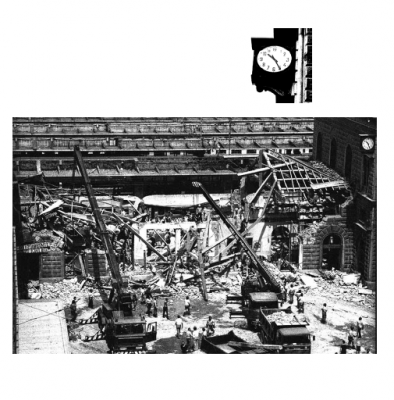
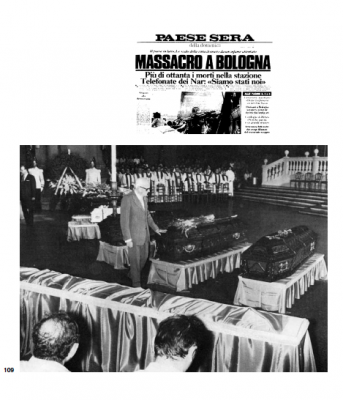
I like the drawings on the floor.
More than a model-model. I think we should create a situation. Columns of wisdom/whispering could work.
Answers more than questions. The answers though don’t have to be true.
What do we repeat today?
Is it the NSU? Many same coordinates (involvement of services/ non-interest of police) suicides and deaths of important witnesses.
As Don DeLillo pointed out in MAO II and what the German Baader Meinhoff Group did so well is producing images. Images of destruction in the news which recall atrocities (like those in Vietnam) but re-enacted in front of our own door.
These were not the images right wing groups would want to create. Anyway the right wing affiliations of the Oktoberfest offender(s) suggests that the attack was carried out within the scope of the ‘strategy of tension’ (in which terrorist attacks by far-right militant organizations were staged by internal state operatives to convince the populace to accept more authoritarian exercises of government power.
Blame the left.
Such strategies have been identified with the top secret NATO stay-behind operation Gladio. Bologna train station a few weeks before the Munich bombing. Right-wing extremists killing 85 people. Munich papers receive calls claiming responsibility from ‘right wingers in Bologna.’ Tobias von Heymann found reports in the archives of East German intelligence, STASI, which make a connection between Gladio, NATO Stay Behind agents, and the Oktoberfest bombing.
Why does nobody talk about Gladio’ involvment now?
The new witness talked about men following her in cars.
The Oktoberfest in Munich is a hedonist and decadent beer festival just to get drunk, to get laid, to party in traditional costumes. All these foreigners having so much fun. Imagine the loser Köhler going around and hating all this. Like an Islamist.
Besides the analyses going on about ISIS that they only recruit Losers I think there is also this romantic idea of being a terrorist, give meaning to your life, fighting for the right thing. But as Zizek pointed out ISIS only fight their own temptation. What did/do the right wingers fight? For the Vaterland, against Communism, the Left. Or their temptations.
Jean Baudrillard:
a) In this system, death itself shines by virtue of its absence. (The Bologna train station, the Oktoberfest in Munich: the dead are annulled by indifference, that is where terrorism is the involuntary accomplice of the whole system, not politically, but in the accelerated form of indifference that it contributes to imposing.) Death no longer has a stage, neither phantasmatic nor political, on which to represent itself, to play itself out, either a ceremonial or a violent one. And this is the victory of the other nihilism, of the other terrorism, that of the system.
There is no longer a stage, not even the minimal illusion that makes events capable of adopting the force of reality — no more stage either of mental or political solidarity: what do Chile, Biafra, the boat people, Bologna, or Poland matter? All of that comes to be annihilated on the television screen. We are in the era of events without consequences (and of theories without consequences).
On Nihilism, 1980
Jean-Louis Bruguière:
80*81: You also found a connection to the attack in 1980, on the Oktoberfest in Munich?
Jean-Louis Bruguière: We were sure that the terrorists of the Rue des Rosiers had contacts with the extreme right and the Nazi groups. The DGSE, the Diréction Générale de la Sécurité Extérieure, the French external intelligence agency, passed me the information that two of the attackers had striking similarity to two German neo-Nazis, Walter Kexel and Odfried Hepp. Hepp was trained by Fatah in a camp in Lebanon, from June 1980 until July 1981. Their antisemitism and antizionism went well with the Palestinian movement. He called himself ‘Youssouf’ and tried to set up a PLO cell in Frankfurt. He is a strong suspect for the bombing in Munich that killed 13 people.
80*81:
Jean-Louis Bruguière was the most important “juge d‘instruction”, as these clandestine researchers are called in France. He became a judge in 1973. He was dealing with local criminal affairs in Normandy. He moved to Paris in 1976, still in charge of small affairs. He transferred to organized crime in 1978 and in 1981 his career exploded. In 1986 he formed an anti-terrorism division in Paris. A year later his apartment was targeted in a grenade attack; Bruguière continued his fight. In 1994, he captured Carlos the Jackal, one of world’s most wanted terrorists. Possibly his biggest case was that of UTA Flight 772 which was sabotaged over the Sahara Desert in 1989 with the loss of 170 lives. Bruguière had six Libyans prosecuted in Paris and convicted in absentia. In 2004, at the height of his career, Bruguière was appointed vice-president of the Paris Court of Serious Claims. He was responsible for the indictment of Rwandan president Paul Kagame for the assassination of Juvenal Habyarimana in 1994. In 2007, Bruguière left his civil function as a magistrate and became a candidate for Nicolas Sarkozy’s UMP conservative party. He was defeated by his Socialist competitor.
I think we should overload with images. Make a wall like the walls in Homeland or The Wire. Pin images together as if we look for traces. But these images are all screwed up. They might make sense, but in a different way. Like the blog that Christopher did totally makes sense in a different Godardian way. Take a look: http://www.8081.biz/ There is such a nice element of the unknown in all of this which. We could recreate this misunderstanding.